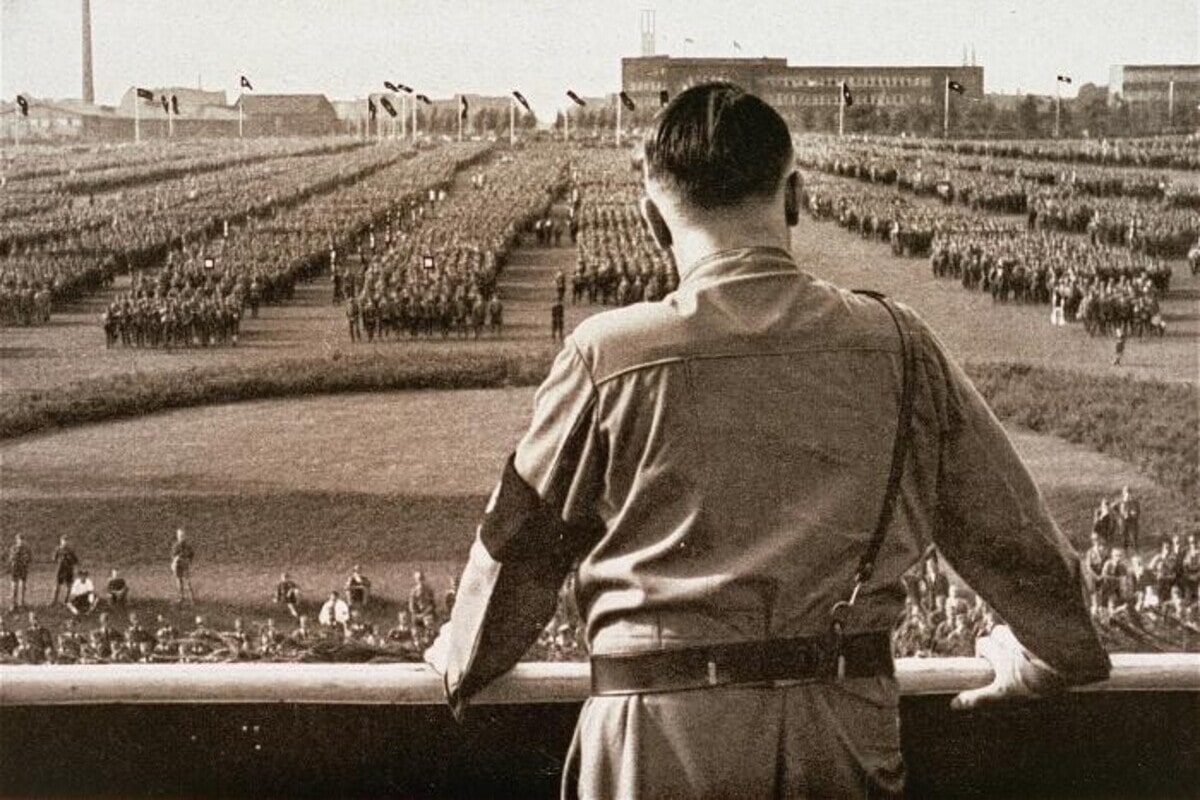The name Adolf Hitler is inseparably linked to one of the darkest periods in human history. However, behind this infamous figure lies a multitude of fascinating and surprising facts you may not know. His life was full of contradictions, unexpected turns and peculiar decisions, making his personality a subject of great curiosity. Some of his habits and character traits might astonish even those well-versed in the history of World War II. Here are some interesting facts about Adolf Hitler that reveal lesser-known aspects of his life.
- Adolf Hitler dreamed of becoming an artist and unsuccessfully applied twice to the Academy of Fine Arts in Vienna. His work was deemed insufficiently talented, which was a severe blow to the young Hitler. These failures are believed to have played a decisive role in shaping his future path.
- As a child, Hitler wanted to become a priest and sang in a church choir. His religious upbringing had a significant influence on his early years. Later, he distanced himself from the church, although certain religious themes appeared in his ideology.
- Hitler was a vegetarian and strictly followed a meat-free diet throughout his adult life. He considered meat to be unhealthy and unethical. He was known to encourage those around him to adopt the same lifestyle.
- Adolf Hitler had only one testicle due to an injury sustained during World War I. This fact was long considered a rumor but was later confirmed by historians. It became the subject of many satirical songs and jokes during the war.
- He was a staunch opponent of alcohol and rarely consumed alcoholic beverages. Hitler promoted a healthy lifestyle and demanded sobriety from his subordinates. Occasionally, he allowed himself a glass of wine at official events.
- Hitler suffered from chronic health problems, including gastrointestinal disorders and symptoms of Parkinson’s disease. He took large amounts of medication, including narcotic substances. His personal doctor, Theodor Morell, was known for his experimental treatment methods.
- He had a particular fondness for animals, especially dogs. His favorite was a German Shepherd named Blondi, who stayed with him until his final days in the bunker. Hitler also introduced laws in the Third Reich prohibiting cruelty to animals.
- Adolf Hitler never officially visited a concentration camp during his reign. He avoided direct contact with sites of mass atrocities committed by his regime. This was part of his policy of distancing himself from the most brutal aspects of his dictatorship.
- He had a fear of dentists and rarely sought dental treatment, which led to severe oral health issues. Witnesses reported that he often had bad breath. This phobia contributed to his dependence on painkillers.
- Hitler was a great admirer of classical music, particularly the works of Richard Wagner. Opera and theatre played a significant role in shaping his aesthetic tastes and ideological views. He regularly attended the Bayreuth Festival dedicated to Wagner.
- Despite his militaristic rhetoric, Hitler could not stand the sight of blood and avoided scenes of violence. During World War I, he served as a courier and rarely engaged in direct combat. This trait contrasted sharply with the brutality of his political decisions.
- His handwriting was very neat and meticulous, reflecting his obsession with order and control. Many documents signed by Hitler have survived and are studied by graphologists. His writing style became a subject of professional analysis.
- Hitler often worked at night and held meetings late in the evening or early morning. He had an irregular daily routine and typically woke up after midday. This schedule affected the working patterns of his entire inner circle.
- At the end of his life, he married his long-time companion Eva Braun just one day before their joint suicide. Their relationship lasted many years but was kept away from public attention. The wedding took place in a Berlin bunker during the city’s siege.
- Hitler was born an Austrian citizen and only obtained German citizenship in 1932. Before that, he was effectively stateless, which complicated his political ambitions. Gaining citizenship was a crucial step towards his rise to power.
- He was an avid fan of cinema and frequently organized private film screenings. He particularly enjoyed American westerns and comedies. He also liked Walt Disney’s animations, especially Snow White.
- Hitler had a deep fear of cancer, as his mother had died from the disease. This fear contributed to his hypochondria and distrust of conventional medicine. He often underwent medical examinations to detect possible illnesses early.
- Despite his anti-British policies, he admired the British Empire and regarded it as a model of a strong state. Hitler hoped to form an alliance with Britain before the outbreak of World War II. However, these plans failed due to the firm stance of the British government.
- He avoided physical contact and disliked handshakes, a fact well known among his associates. Instead, he preferred the Nazi salute as a symbol of discipline and distance. This reflected his views on hierarchy and social interaction.
- Hitler was extremely vain and carefully managed his public image. He personally oversaw which photos and videos could be published. Any material showing him in an unfavorable light was strictly censored.
These incredible and fascinating facts about Adolf Hitler show how complex and contradictory his personality truly was. His habits, fears and character traits differed greatly from the image crafted by official propaganda. Learning such details helps to better understand the mindset of a dictator and the motivations behind his actions. By reflecting on these facts, we can draw important lessons from history to prevent the repetition of past tragedies.





